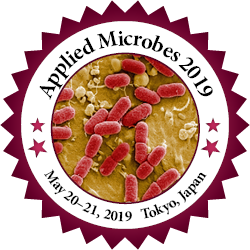
Lidia Sas Paszt
Research Institute of Horticulture, Poland
Title: The influence of bio-fertilizers enriched with beneficial bacteria and filamentous fungi on the growth and rhizosphere microbiology of ‘Marmolada’ strawberry plants in container cultivation
Biography
Biography: Lidia Sas Paszt
Abstract
The experiment in stoneware pots was established in the spring of 2018 in four replications in the Experimental Field of the Warsaw University of Life Sciences in Skierniewice. The objects studied were strawberry plants of the cultivar ‘Marmolada’.
The experiment was conducted in stoneware pots with a diameter of 40 cm filled with about 270 litres of arable soil with a pH of 6.2, to each of which three seedlings of the Frigo A+ type (15-18 mm) strawberry plants were planted out at the beginning of May. Each combination consisted of six replications (stoneware pots). The experiment was established in a random block design with a total of 13 experimental combinations, including beneficial microorganisms and filamentous fungi, and a no-treatment (zero) control. In addition, the ‘Marmolada’ strawberry plants were divided into two experimental groups: in one of them the plants were grown in optimal irrigation conditions (100% of the water dose), and in the other, from mid-June, under drought stress (50% of the water dose). In both groups, the same fertilization was applied. The experiment included the following experimental combinations: 1. Control – plants not fertilized; 2. Standard NPK fertilization; 3. Control with the addition of filamentous fungi (Aspergillus niger and Paecilomyces lilacinus); 4. Control – with the addition of beneficial Bacillus bacteria (Bacillus sp., Bacillus amyloliquefaciens and Paenibacillus polymyxa); 5. Standard NPK + filamentous fungi; 6. Standard NPK + beneficial bacteria; 7. 100% Polifoska 6 + beneficial bacteria; 8. 100% Urea + filamentous fungi; 9. 100% Polifoska 6 enriched with beneficial bacteria; 10. 100% Fos Dar 40 enriched with beneficial bacteria; 11. 60% Urea enriched with filamentous fungi; 12. 60% Polifoska 6 enriched with beneficial bacteria; 13. Fos Dar 40 in a 60% dose enriched with three strains of beneficial bacteria.
In 2018, yielding was not assessed because all inflorescences were removed. The amounts of minerals (macro- and micronutrients) were determined in strawberry leaves. In the autumn, runners were collected for assessment, where the number, fresh weight, length, the number of runner plants and their fresh weight were determined. The results of the first year of the study showed that filamentous fungi and beneficial bacteria applied together with mineral fertilizers tested on strawberry plants (Urea, Polifoska 6, Fos Dar 40) increased their biological activity. This was particularly evident in the development of the aboveground parts of strawberry plants (runners and runner plants, and the concentration of some minerals, macro- and microelements, in the leaves).
The amount of water supplied to the strawberry plants fertilized with various mineral fertilizers enriched with beneficial bacteria and fungi had a greater impact on the growth characteristics of the aboveground parts of the plants when using the full dose of water (100%) than the dose of water reduced by half (50%).
The microbiological analysis of the soil showed that the microbially enriched mineral fertilizers Polifoska 6 and Fos Dar 40 (with the addition of beneficial Bacillus bacteria: Bacillus sp., Bacillus amyloliquefaciens and Paenibacillus polymyxa), and Urea at 100% applied together with filamentous fungi (Paecilomyces lilacinus, Aspergillus niger) had a favourable effect on increasing the numbers of beneficial microorganisms in the rhizosphere soil of ‘Marmolada’ strawberry plants.
"This paper is financed by The National Centre for Research and Development in frame of the project BIOSTRATEG, contract number BIOSTRATEG3/347464/5/NCBR/2017".

